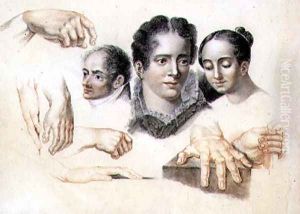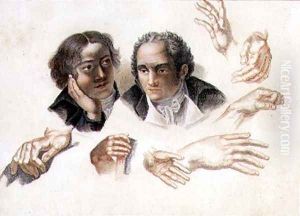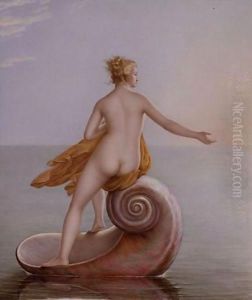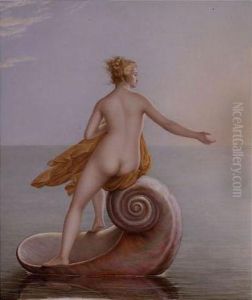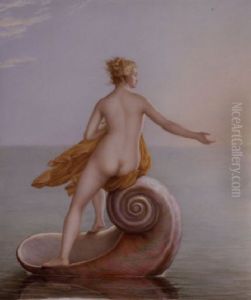Abraham Constantin Paintings
Abraham Constantin, also known as Abram Constantin, was a notable Swiss artist born in 1785 in the midst of the Swiss Confederation's rich cultural and historical landscape. Although not as universally recognized as some of his contemporaries, Constantin made significant contributions to the art world, particularly in the realm of miniature painting, a form that was highly prized during his lifetime for its intricacy and the skill required to execute detailed works on such a small scale. His work often reflected the elegance and refined tastes of the European aristocracy during the late 18th and early 19th centuries, capturing the subtleties of expression and the elaborate dress of his subjects with remarkable precision.
Throughout his career, Constantin's talent in miniature painting was widely acknowledged, and he became particularly known for his portraits. The precise detailing of his miniatures, combined with a sophisticated use of color and light, allowed him to capture not just the physical likeness but also the essence of his subjects, making his works highly sought after by the elite of his time. His ability to encapsulate the character and mood of his subjects within the confines of a miniature portrait is perhaps one of the key reasons his work has continued to be appreciated by art historians and collectors alike.
Despite the challenges faced by artists of his era, including the turbulent political and social changes sweeping across Europe, Constantin managed to sustain a successful career. His works were exhibited in various prestigious venues, further establishing his reputation among the European art circles. After his death in 1855, Abraham Constantin's contributions to the field of miniature painting continued to be celebrated for their technical excellence and emotional depth. Today, his pieces can be found in several major museums and private collections around the world, serving as a testament to his skill and enduring appeal in the art historical canon. Although the popularity of miniature painting has fluctuated over the years, Constantin's work remains a significant part of the discussion on the evolution of portrait art and the ongoing appreciation of miniaturism in the visual arts.
